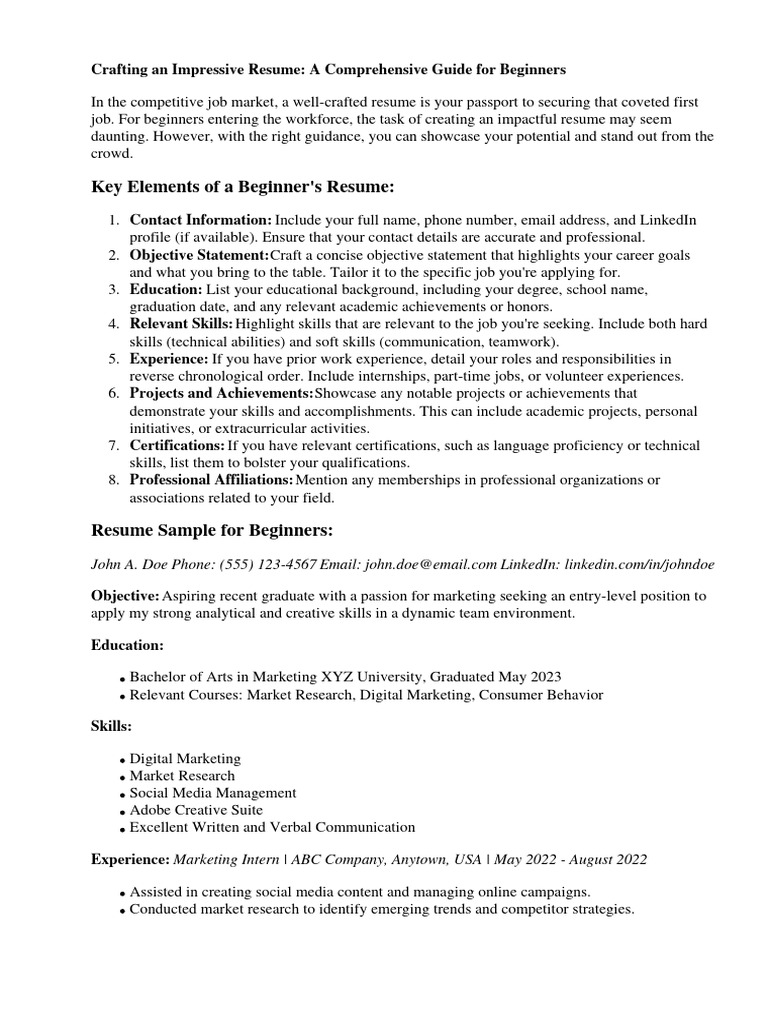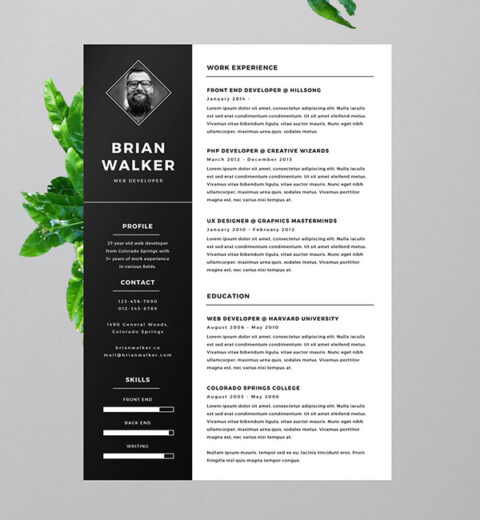Creating a resume can be a daunting task, especially for beginners who may feel overwhelmed by the multitude of formats, styles, and information often recommended. The resume serves as a critical first impression for potential employers, making it essential to craft a document that not only showcases your skills and experience but also stands out amidst a sea of applicants. This guide will provide a comprehensive approach to building a potent resume that effectively communicates your qualifications.
Before embarking on the resume creation process, it is vital to understand the fundamental purpose of a resume. At its core, a resume is a concise summary of your work history, skills, accomplishments, and education. It should ideally persuade a hiring manager that you are the right fit for the position. Keeping this objective in mind will guide the content and structure you choose to embrace.
1. Understand the Basics of Resume Format
There are several formats to consider when constructing your resume, the three most prevalent being chronological, functional, and combination resumes.
- Chronological Resume: This format lists work experiences in reverse chronological order, emphasizing your career progression. It is ideal for those with a solid employment history in a specific field.
- Functional Resume: Focusing on skills rather than employment dates, this format is beneficial for individuals with gaps in their work history or those transitioning careers. It showcases relevant abilities at the forefront.
- Combination Resume: This hybrid format combines both chronological and functional aspects, providing a comprehensive view of both skills and career progression.
Choosing the right format is crucial, as it directly affects how your information is perceived. For beginners, a chronological resume is often the most straightforward option, as it aligns with traditional hiring expectations.
2. Include Essential Components
Each resume should consist of several key components, each playing a pivotal role in how an employer views your qualifications. The essential sections to include are:
- Contact Information: At the top of your resume, include your name, phone number, email address, and optionally your LinkedIn profile or personal website. Ensure that your email sounds professional; for instance, use a combination of your name rather than whimsical nicknames.
- Objective or Summary Statement: A resume objective or summary statement articulates your career goals and the unique value you bring to a potential employer. This section should be succinct, tailored to the job, and compelling enough to grab attention.
- Experience: This is the heart of your resume. List your professional experiences, detailing your role, key responsibilities, and notable achievements. Utilize action verbs and quantifiable metrics where possible to illustrate your contributions.
- Education: Detail your educational background, beginning with the most recent degree and working backward. Include the institution’s name, degree earned, and graduation date. If you’ve taken relevant coursework or certifications, they should also be noted here.
- Skills: Highlight a diverse array of skills pertinent to the job you are applying for. Include both hard skills (technical abilities) and soft skills (interpersonal traits), as both are valued by employers.
Additional optional sections may include volunteer work, awards, or professional affiliations, which can further bolster your candidacy by providing richer context to your character and work ethic.
3. Tailoring Your Resume
Generic resumes will likely go unnoticed in a competitive job market. Tailoring your resume for each position you apply for is imperative. Carefully analyze the job description and identify keywords or skills emphasized by the employer. Incorporate these keywords naturally into your resume to enhance alignment between your qualifications and the job requirements.
Furthermore, remember to adjust your objective statement and, if applicable, your experiences to resonate more closely with the position. By doing so, you showcase targeted aspirations and relevant expertise, compelling the recruiter to take notice.
4. Design and Layout Considerations
The aesthetic presentation of your resume is equally important as its content. An uncluttered, well-organized format enhances readability and leaves a positive impression. Use standard fonts such as Arial or Times New Roman, opting for a size that is between 10 and 12 points.
Whitespace is essential to create breathing room and direct the reader’s eye to key sections. Ensure consistent formatting for headings, bullet points, and spacing. Furthermore, avoid excessive embellishments, such as graphics or complex layouts, unless you are applying for creative roles where such creativity may be warranted.
5. Proofreading and Final Touches
After drafting your resume, it is crucial to review it meticulously. Typos, grammatical errors, or inconsistencies can undermine your professionalism and attention to detail. Read your resume multiple times, and consider requesting feedback from peers or mentors. A fresh set of eyes may spot issues you’ve overlooked.
Also, consider going through your resume with industry-standard software tools that check for grammatical accuracy and stylistic coherence. Ensuring clarity and conciseness is paramount.
6. Additional Resources
There are numerous tools and resources available to assist you in crafting your resume. Online platforms provide templates, examples, and guidelines tailored to various industries. Engaging in career workshops or resume-building services can provide valuable insights and professional assistance.
As a beginner, the key to an effective resume lies in careful planning, attention to detail, and a willingness to adapt and learn. By following these guidelines, you can create a resume that not only meets basic expectations but also distinguishes you in a competitive field. Remember, your resume is the gateway to your professional future; invest the time and effort necessary to develop a strong representation of your capabilities.
In conclusion, the journey of creating a compelling resume begins with understanding its purpose and strategically assembling its components. By focusing on tailored content, a professional layout, and diligent proofreading, you will be well-equipped to present yourself as a qualified candidate ready to embark on a successful career path.



